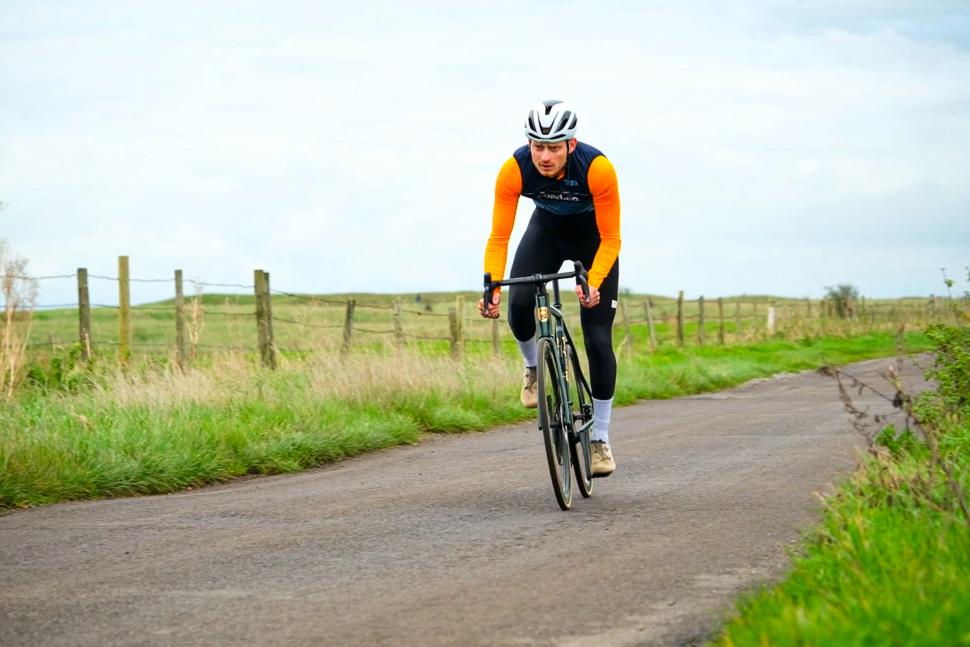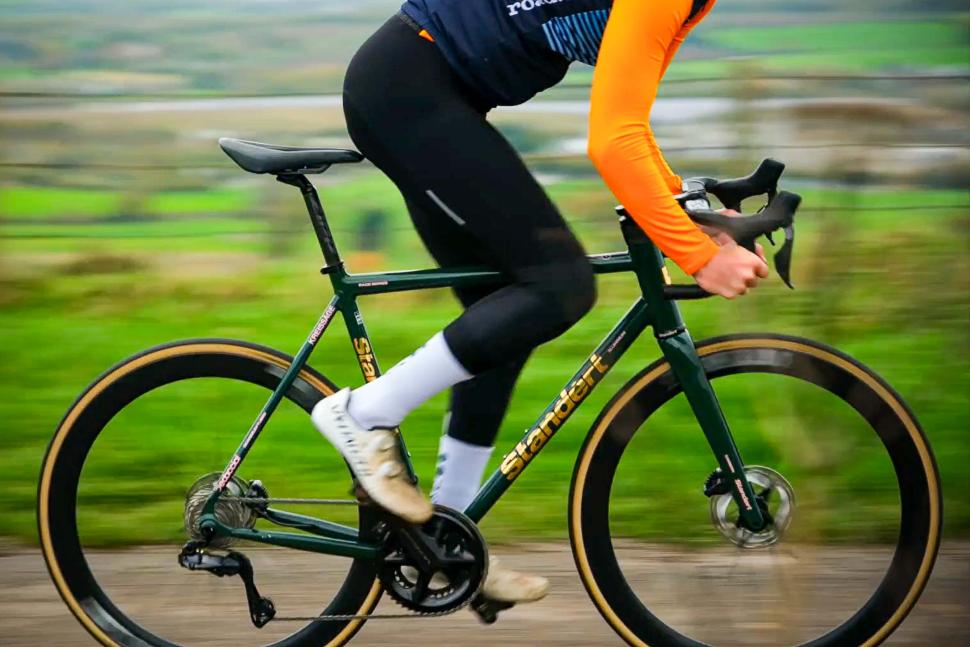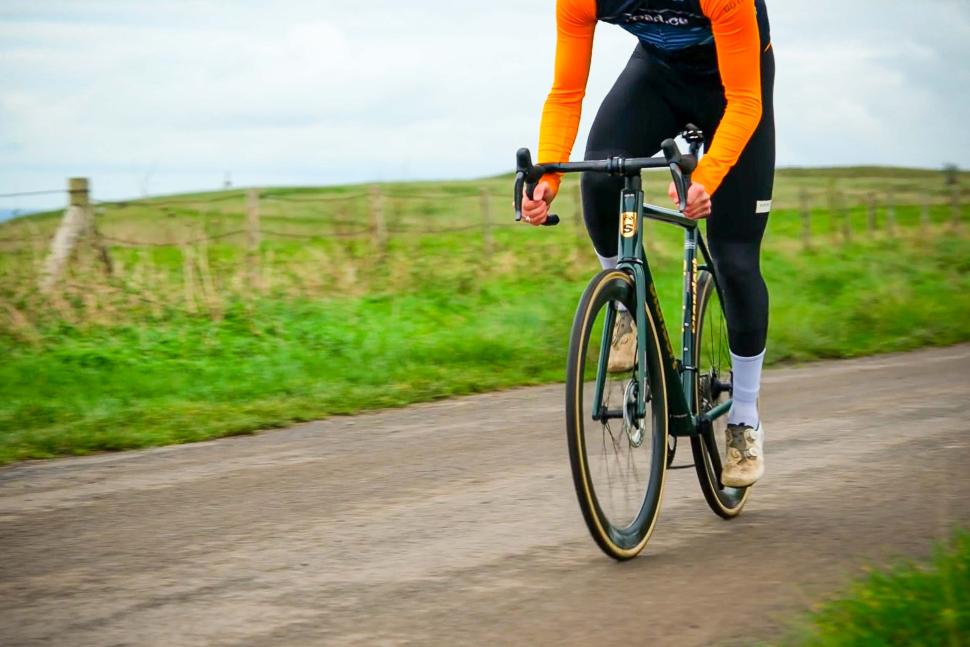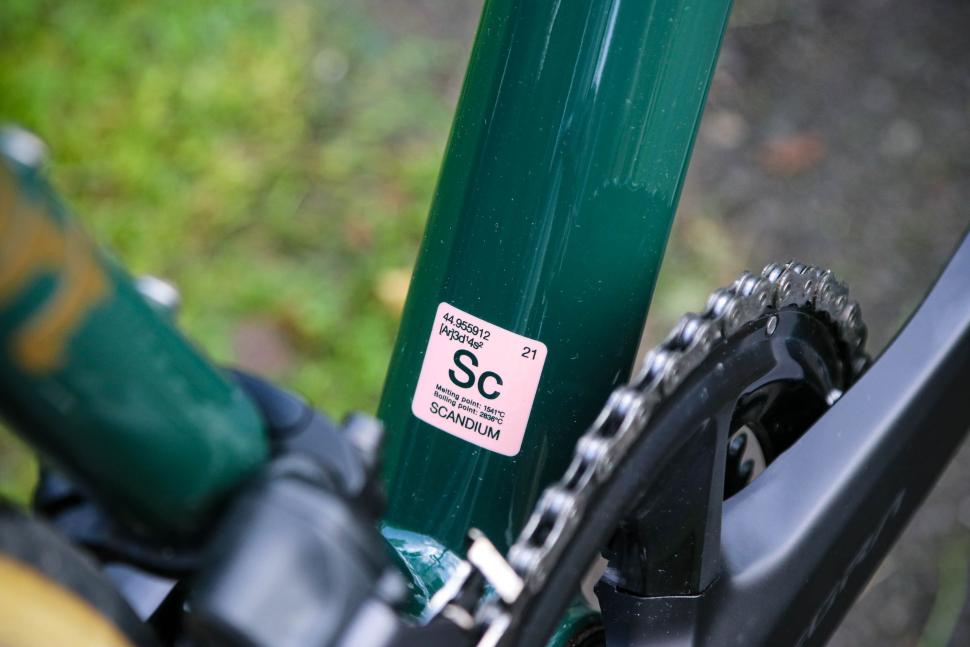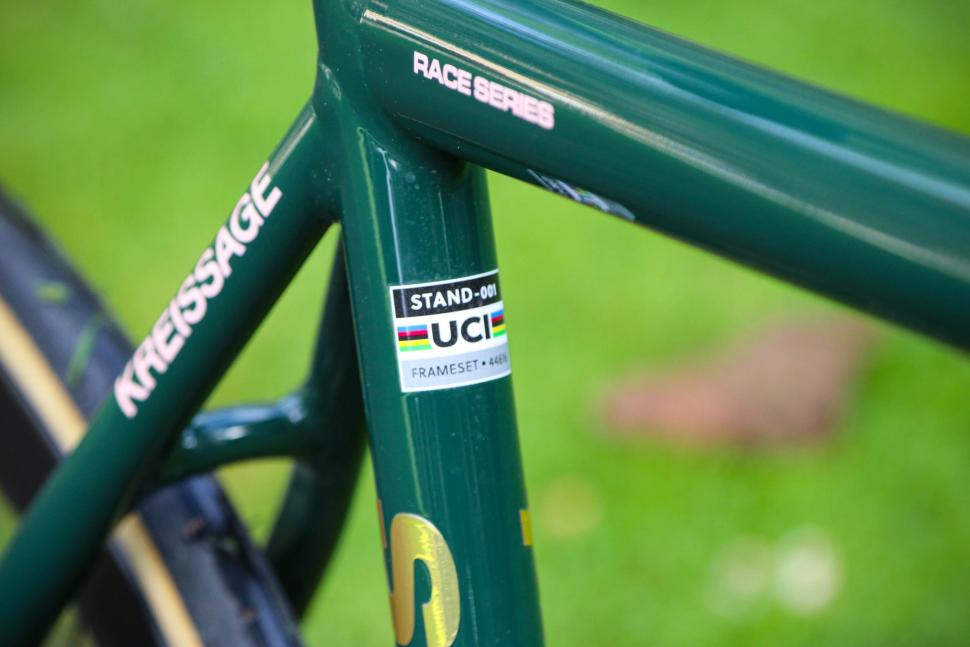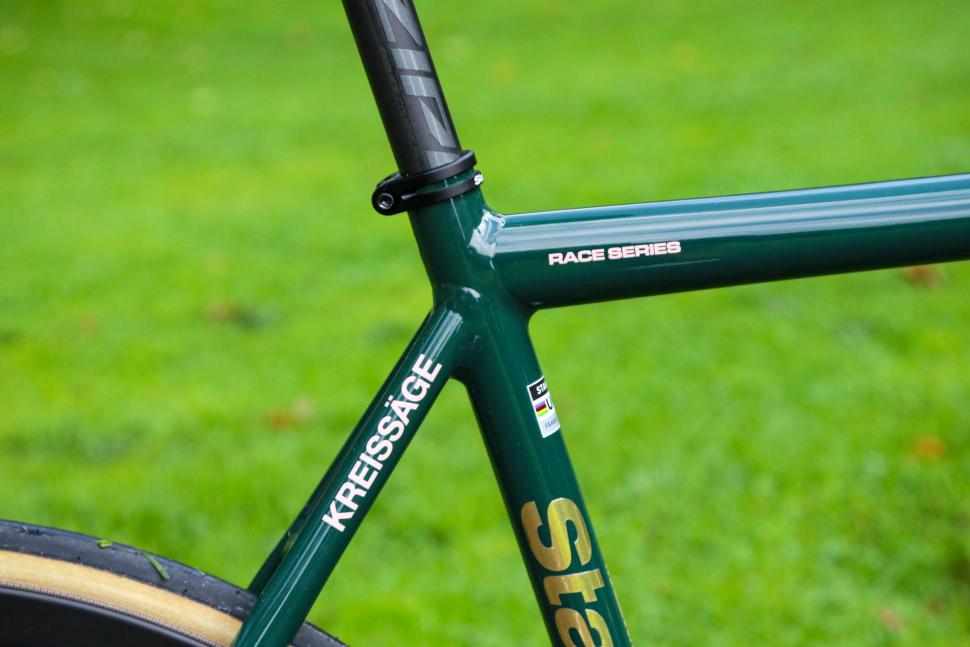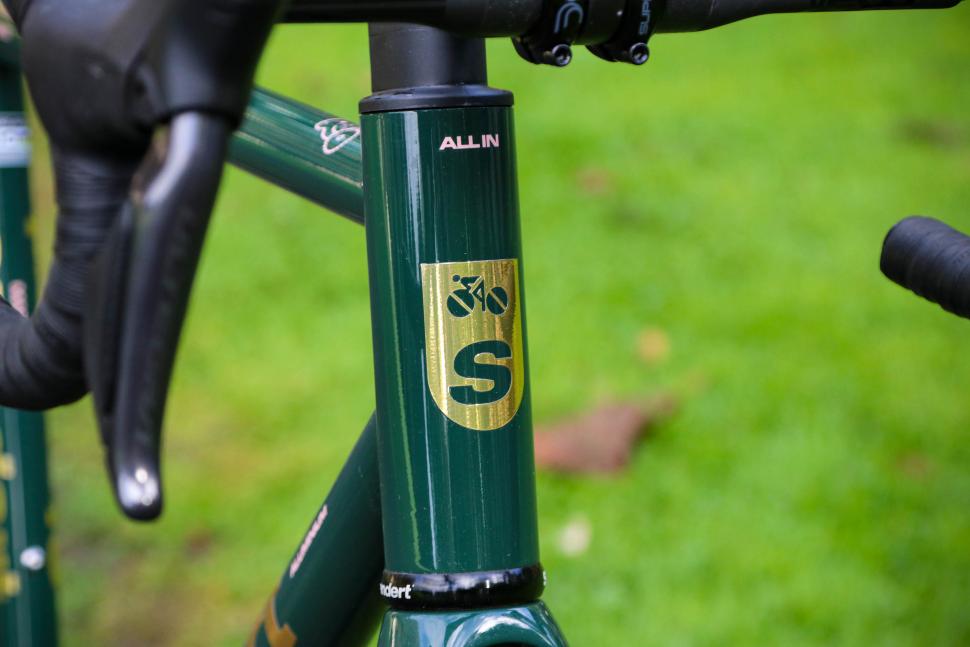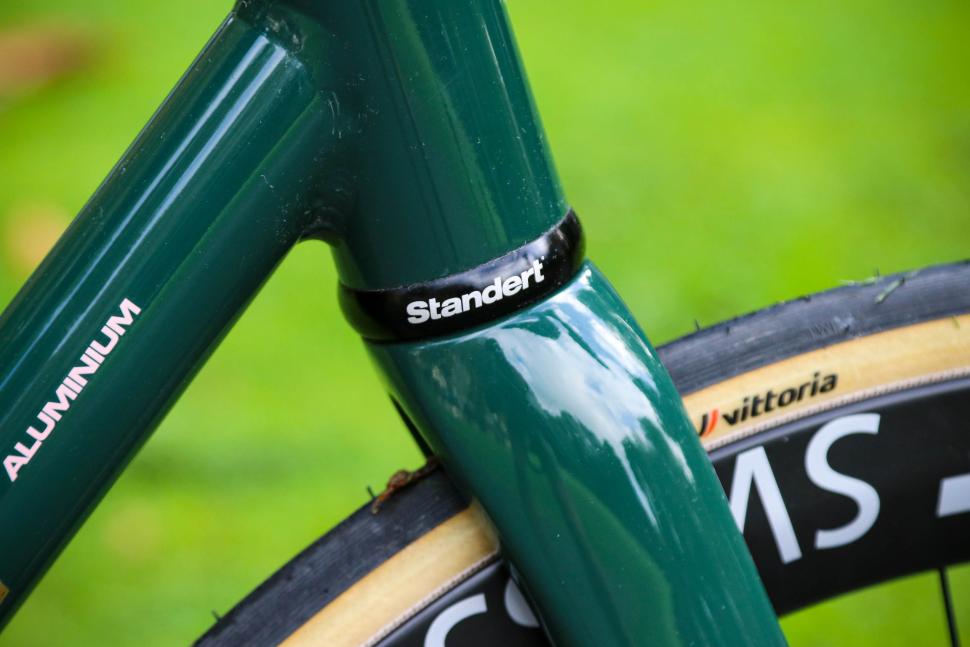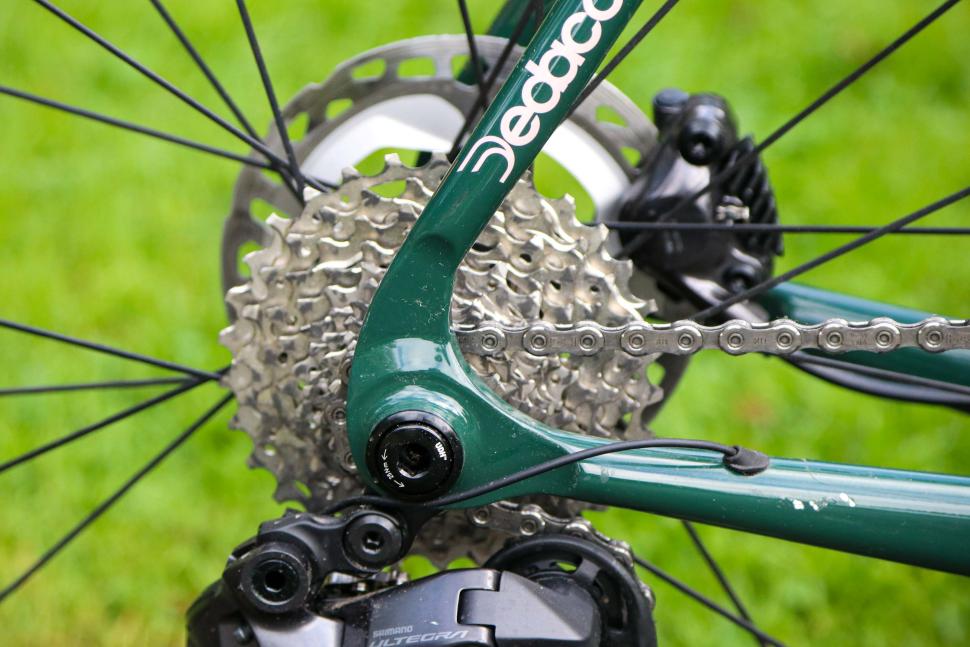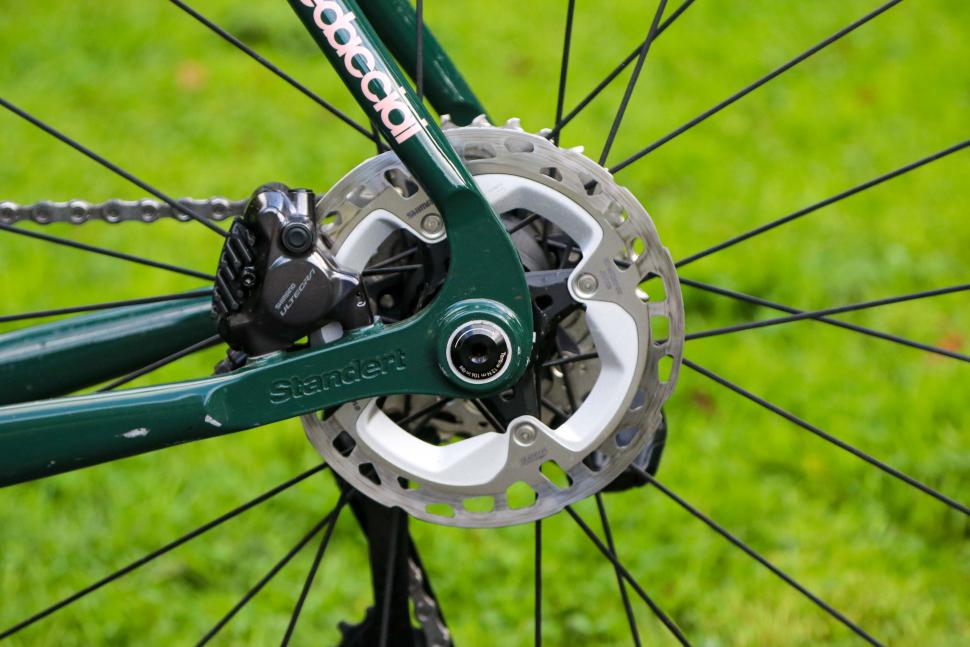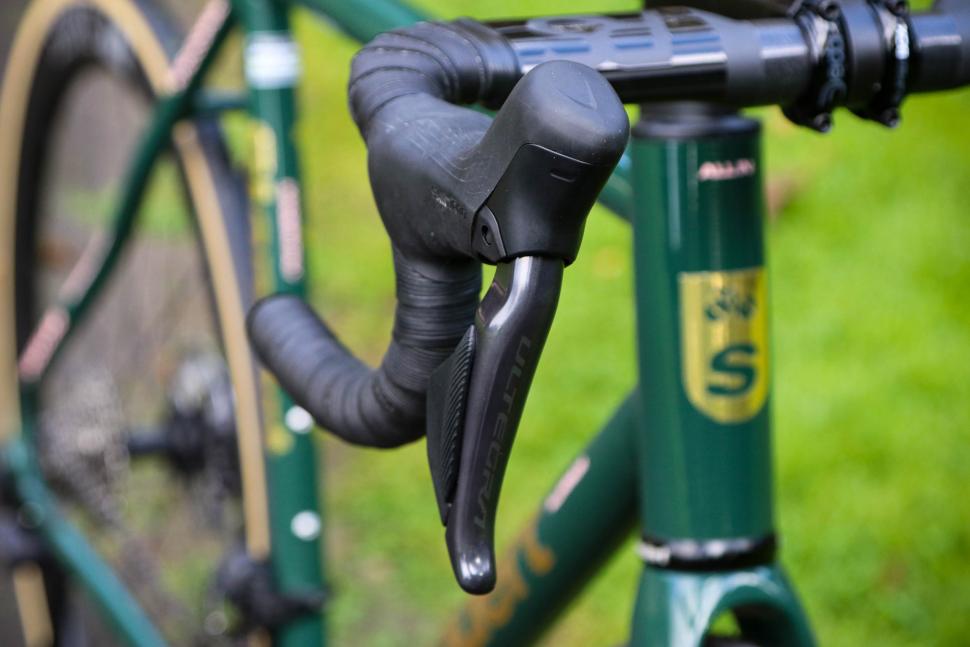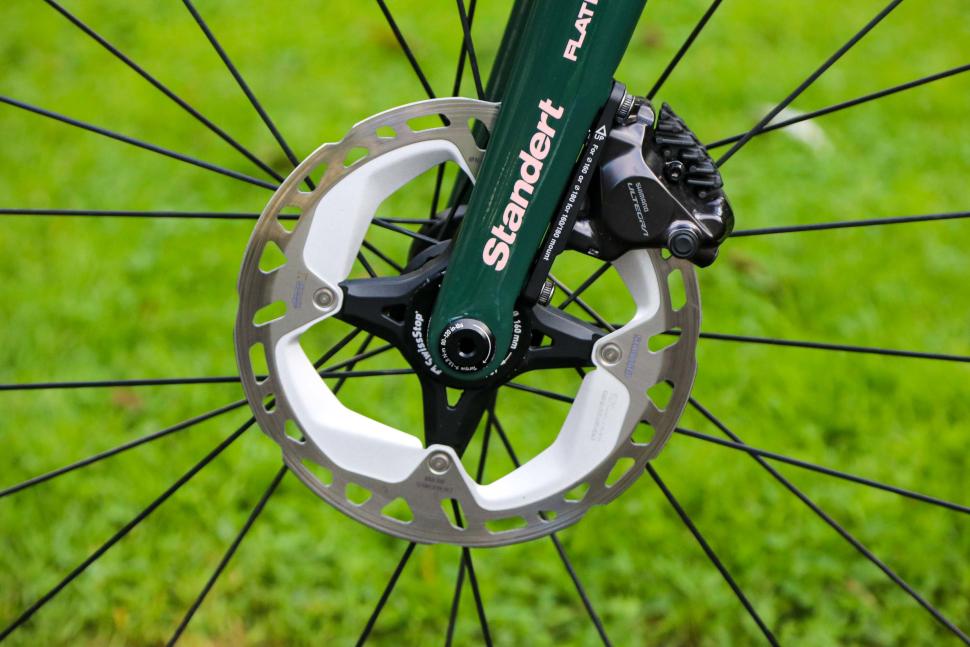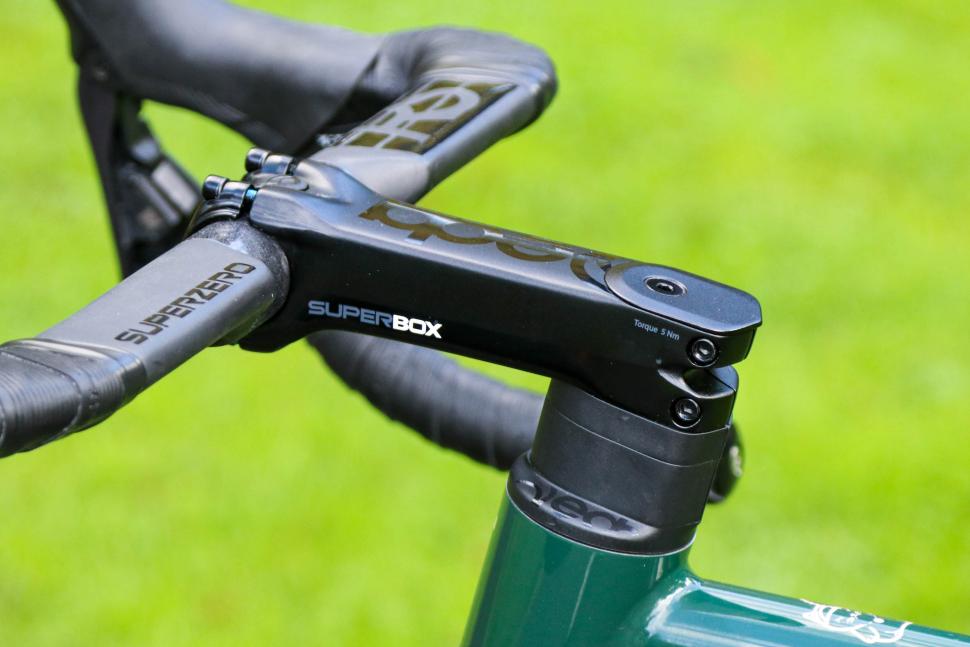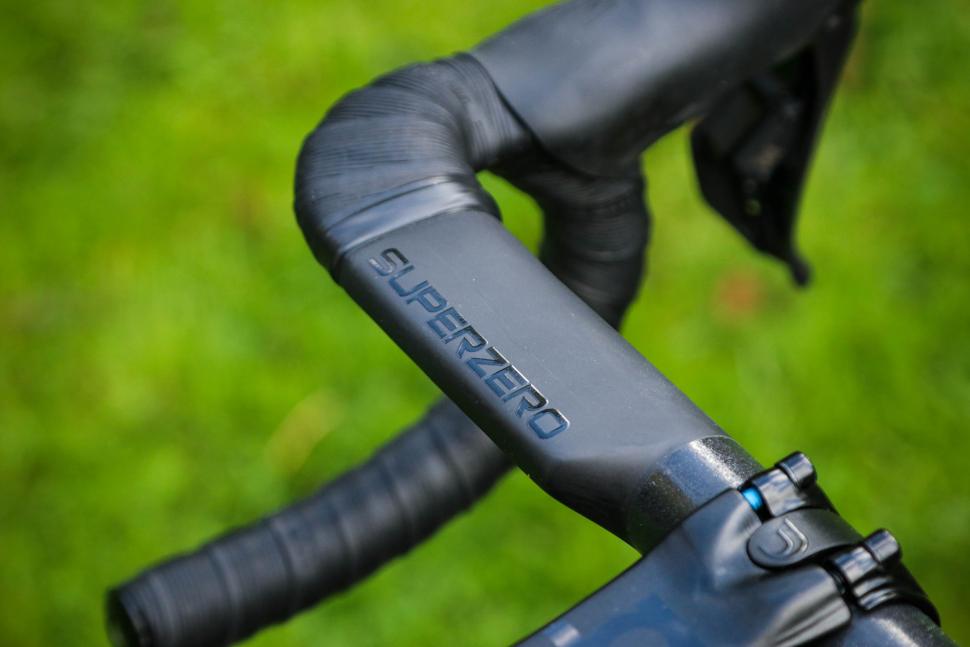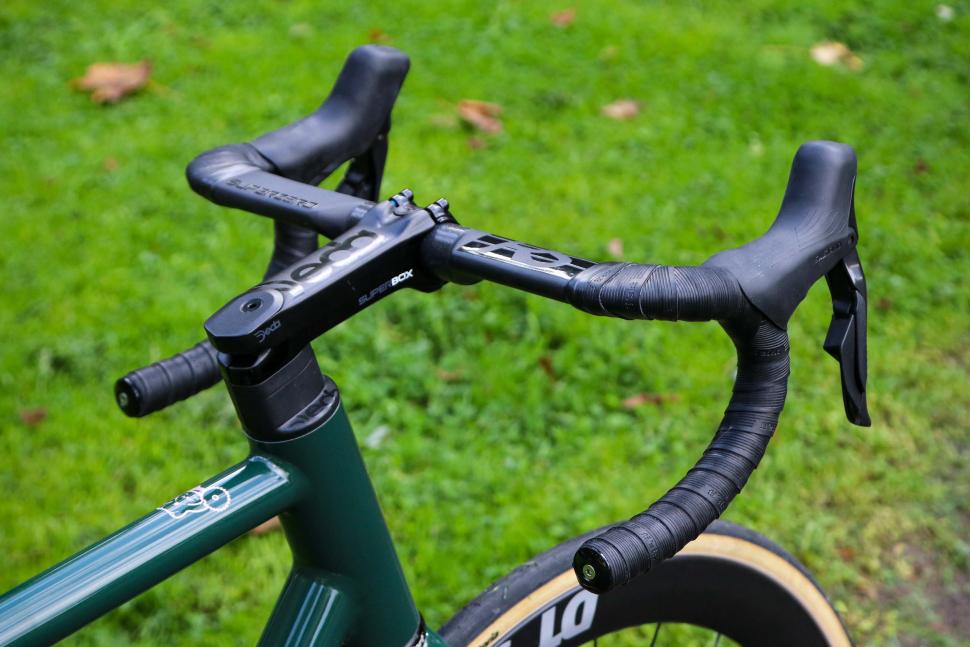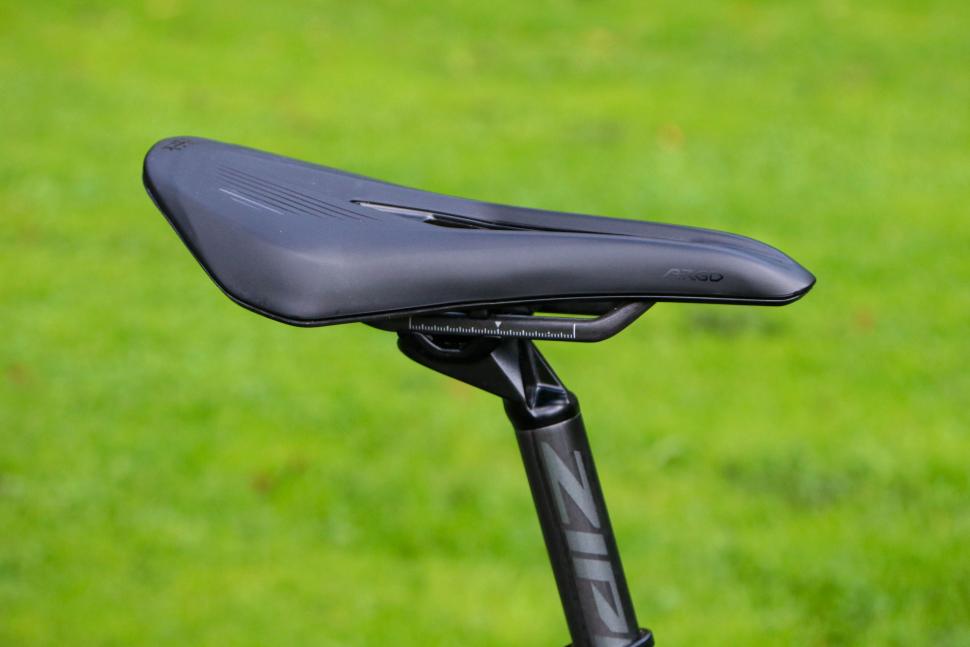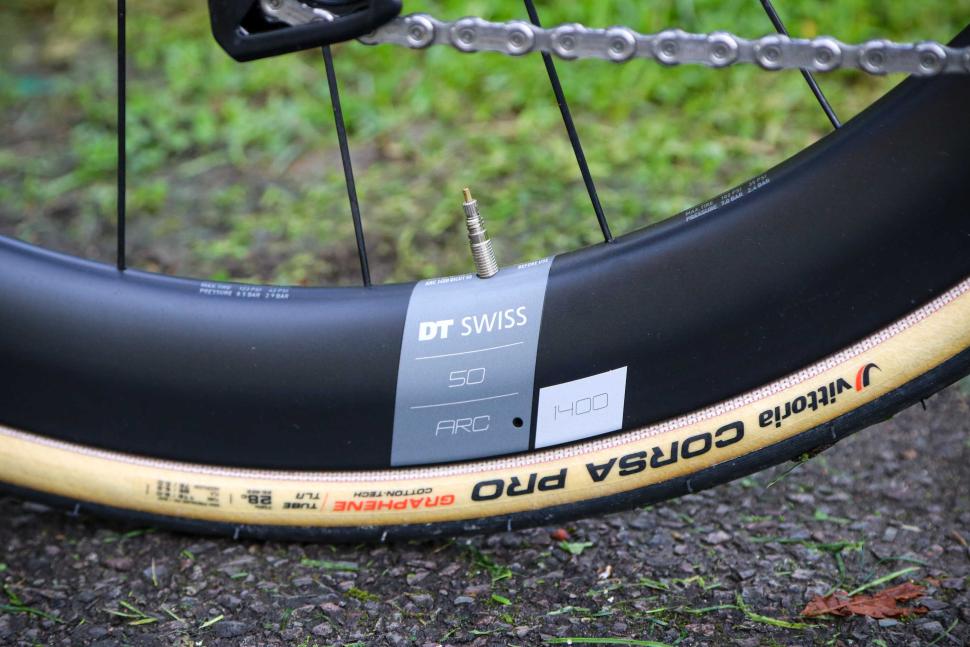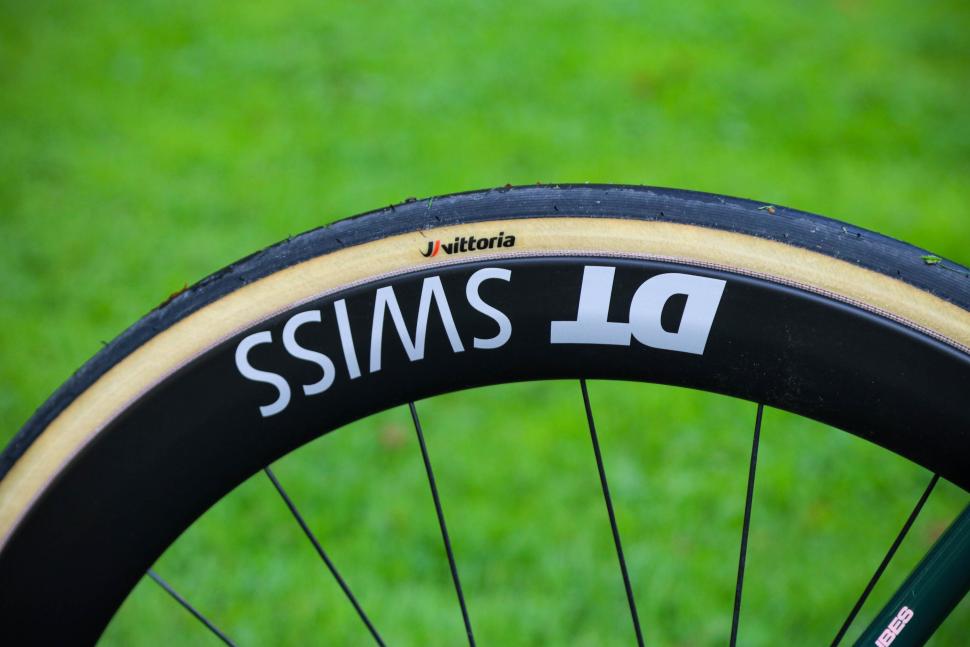If, like me, you love the aesthetics of a traditional race bike then the Standert Kreissäge RS could definitely be the bike for you. Bang up to date with integrated hose runs and electronic gear cabling, thru-axles and hydraulic disc brakes, the RS has everything the performance rider needs while exploiting the benefits of modern alloy tubing. All of this doesn’t come cheap, mind, but this is no mass-produced scandium alloy frame.
> Buy now: Standert Kreissäge RS for €6,599 from Standert
Check out our guide to the best aluminium road bikes for more options in metal…
Standert Kreissäge RS: Ride
If you’ve been reading our bike reviews any time over the last 15 years you’ll probably know that I’m a big fan of metal bikes (I’ve just bought my second ever carbon frame – 14 years after I sold my first one), so to get offered the chance to review the Kreissäge RS filled me with a lot of joy. Especially as it uses scandium aluminium tubing, which isn’t something we see that often, and it certainly helps on the performance front.
The RS is a race bike, described by Standert as one to “go fast, brake late, hit the apex, accelerate out of turns and sprint for whatever you are sprinting for”. So, I knew stiffness was going to be high on the agenda, and it certainly is. This is the kind of bike you ride if comfort is a secondary consideration, and a KOM means more to you than arriving back home with some feeling left in your contact points… and to be honest, that is a bit of me.
I will say, though, that this is one of the most unforgiving aluminium alloy bikes I’ve ever ridden, and I’ve owned and ridden more than most people.
For reference, I’ve owned a Cannondale CAAD 8 and CAAD 10, an original Kinesis Aithien, a Kinesis T2, Focus Izalco and a Mason Definition, and I’ve ridden loads of others from the likes of Specialized’s Allez range, Trek and so on.
A lot of them were no slouches when it came to performance either, so it’s not like the stiffness here is throwing a spanner in the works. If you spend a lot of time on main roads with a decent smooth surface things aren’t too bad, but move away from those and the slightest ripple is very noticeable, and high-frequency buzz can get a touch annoying.
Feedback from the tyres isn’t sacrificed too much, though, and the Kreissäge RS has a refined feel to it, maintaining a good relationship between bike and rider.
It certainly feels agile, and responsive, too, especially when hammering the pedals hard while out of the saddle, easily competing with carbon fibre frames of a similar price. The only place where the RS isn’t quite so competitive against them is weight.
Scandium – a rare-earth metal – is generally added to an aluminium alloy mix to increase strength, or to achieve the same strength as an aluminium alloy frame but at a lower weight, though the amount of scandium actually added is very small. In this Ultegra Di2 build with deep-section carbon wheels, we’re talking 8.22kg on our scales, which is more than 600g heavier than something like Argon 18’s carbon Sum that I reviewed a few months back, which has a similar build spec and price.
Another aluminium race bike I’ve reviewed was the relatively budget-friendly Sonder Prima Al, which cost half the price of the Standert, weighed 8.79kg with Shimano 105 Di2, entry-level finishing kit and some very heavy own brand wheels which weighed over 2kg! Switch those out for wheels similar to the weight of the DT Swiss set found on the RS and you’ll be saving close to 600g, so the same overall weight roughly, while saving a lot of cash.
This means the Standert doesn’t feel superlight on the climbs. It’s no slouch, but it’s noticeable if you are used to riding lighter carbon race bikes. Everywhere else, though, the RS feels nimble enough and thanks to the geometry, with its relatively steep angles and short wheelbase, the RS changes direction quickly and positively.
The short head tube allowed me a long and low position whether on the hoods or drops, which makes the whole experience of riding the RS feel rewarding.
In fact, when riding hard you can feel how well suited the Kreissäge would be to something like criterium racing. The fork is stiff, so hard braking efforts and throwing the bike into tight corners doesn’t unsettle the front end, while the tight, stiff lower half of the frame means that when you hammer the pedals to pull yourself out of the bend the RS just feels planted and efficient.
Standert Kreissäge RS: Frame & fork
The Kreissäge RS is built in Italy from custom scandium tubing manufactured by Dedacciai. Compared with a traditional round tubed frame, you can see subtle tweaks to the tube profiles as they travel from A to B, optimising performance depending on where they sit on the bike.
Probably one of the most noticeable things is that Standert hasn’t gone down the route of dropping the seatstays, something that is commonly done to improve aerodynamics. I like the traditional look, though, and aero isn’t really what the RS is all about.
For this sort of money I wasn’t overly enamoured by the quality of finish of the welding. The benchmark for me when it comes to the finish on metal frames is that offered by Mason Cycles; on its aluminium alloy Definition the welds are finished to a smooth and very high standard, and the Kreissäge doesn’t quite match that attention to detail.
Like the Mason, Standert hasn’t sanded the joins at all for a smoother finish, leaving all of the integrity of the original weld, which is a bonus.
It is better than cheaper options, though, such as the current Cannondale CAAD13, whose welding is, shall we say, somewhat agricultural, as can also be said for the Specialized Allez Sprint. Between those and the Mason, the Standert hits the middle ground.
The Kreissäge RS is available in a stunning line-up of eight colours, which go a long way to hiding those welds. The paint on this bike looks deep and glossy, although, while I like the gold decals, I personally think the pink clashes a bit.
Standert has specced a T47 bottom bracket for the Kreissäge RS, which I was pleased to see as it blends the performance of larger diameter press-fit systems with the reliability of threaded BSA setups.
At the time of ordering you can upgrade things like the headset and bottom bracket to ceramic bearings, and even chain waxing is offered.
The CNC machined rear dropouts will accept a UDH rear mech hanger – a universal derailleur hanger. Should you crash and damage it, you won’t need to source a model-specific hanger, so the chance of picking one up in a local bike shop massively increases.
Tyre clearance is a decent 30mm, and you can run up to 160mm diameter rotors front and rear.
Standert offers the Kreissäge RS in seven sizes ranging from 48cm to 60cm. I had the 56cm, which comes with a 555mm top tube and 145mm head tube. The head and seat angles are both 73.5 degrees, while the stack and reach figures are 560mm and 390mm respectively.
The chainstays are 410mm in length, the wheelbase 986mm in total.
Standert Kreissäge RS: Finishing kit
As I mentioned above, the Kreissäge RS is available in a choice of eight colours, and after you’ve chosen your frame size you can spec your build from a range of options. For groupsets it’s electronic only, and your choices are Shimano 105, Ultegra and Dura-Ace Di2 and SRAM Force or Red AXS.
Our build uses Ultegra Di2 which is a great groupset in pretty much every aspect. For the full lowdown on everything from gear shifting performance to braking you can check out our separate review. As usual, it performed faultlessly and the braking remains constant and powerful whatever the weather.
The customisation doesn’t run to crankset or cassette choice on Standert’s website, but the 52/36T and 11-30T 12-speed is a good choice for fast riding.
The cockpit is taken care of by Deda with its Superbox DCR stem, which is designed to run the brake hoses into the frame and fork via the top of the head tube. Compared with some designs out there that do the same job it is quite understated and suits the aesthetics of the frame.
Deda’s SuperZero RS carbon handlebar has a wing shape to the tops and provides plenty of comfortable hand positions, while its stiffness matches that of the frame. It’s ideal for hard sprinting efforts.
For both of these components you can choose what size you want.
You can also choose which saddle you would like – well, from two options: the Fizik Vento Argo R1 or the Argo R1 Adaptive. The latter adds €100 to the price. I’m a big fan of Fizik’s saddles, and I’ve used both of these and found them comfortable and supportive.
Again, there are more options available for the wheels and tyres. For wheels it’s a choice of DT Swiss ARC 1100 or ARC 1400 sets, or the Artech 4 or 6 from Scope.
This build has the ARC 1400s in a 50mm depth, and a very nice set of wheels it is too. I’ve recently reviewed the 38mm versions and pretty much everything I’ve said there is true of these slightly deeper ones. Their low weight helps boost the performance of the RS and they have great lateral stiffness.
For the tyres we have a set of Vittoria’s Corsa Pros, which are stunning – very supple with great grip. But if you wish you can choose Challenge Criterium RS or Schwalbe Pro One Evo tyres instead.
Standert Kreissäge RS: Value
Standert is based in Berlin, and all orders are placed through its website, although it’s worth noting that shipping to the UK will cost €220. Being in Germany, all the prices are in euros, with this build costing €6,599 – which equates to around £5,490 depending on the exchange rate at the time. A similar build but with 105 Di2 is €5,959 (£4,958) and with SRAM Force it’s €6,659 or around £5,541.
In terms of competition, there aren’t many scandium race bikes out there to compare the Kreissäge RS with, and none that we’ve actually reviewed.
Spoon Customs has the Sestriere which is available as a frameset for £1,895, or for a SRAM Rival AXS build with Zipp 303s wheels it’s £5,100. A similar sort of ballpark then.
For similar performance and weight, though, you don’t necessarily need to go down the scandium route, which could save you a lot money. The Specialized Allez Sprint Comp, for example, which Liam reviewed in 2022, costs £2,600, and that’s the range topper – as with most brands, aluminium doesn’t make it much higher up the pecking order. You are getting 105 mechanical and basic DT Swiss wheels, but if electronic gears aren’t the be all and end all for you then spending a grand on some lightweight aero wheels from the likes of Hunt or Scribe will get you a light and stiff race bike for decent money. A frameset is £1,500 if you wanted to build a complete bike from scratch.
It’s the same with the Cannondale CAAD13; that model tops out at SRAM Rival AXS and DT Swiss R470 wheels, but it’s quite pricey at £3,400. We reviewed the 105 model back in 2020.
Standert Kreissäge RS: Conclusion
The Kreissäge RS is designed for aggressive riding, and thanks to the stiffness on offer from the frame and fork it performs very well indeed. Like I said earlier, though, that stiffness comes at the cost of the ride quality on UK roads.
The price seems quite high, too, though I think that’s partly down to the fact that most brands don’t use scandium or aluminium alloys higher up their ranges. I also appreciate that the small nature of the company, and the fact that its bikes are built in Italy as opposed to the Far East, will also increase the bottom line.
The trouble is, I can’t actually see the benefit of the Kreissäge RS over many of the cheaper aluminium alloy race bikes on the market; it’s barely any lighter, the stiffness isn’t noticeably greater in the real world, and it’s not quite special enough in terms of the finish quality for the extra cash, in my opinion. It’s a good bike overall, but it’s not quite the full package for the price.
> Buy now: Standert Kreissäge RS for €6,599 from Standert
Verdict
All the stiffness needed for a race machine, but the ride quality isn’t the best for UK roads
Make and model: Standert Kreissäge RS
List the components used to build up the bike.
Shift / Brake Levers: Shimano Ultegra Di2 R8170
Rotors: Shimano MT-800 160mm (F)/140mm (R)
Derailleur Front: Shimano Ultegra Di2 R8150
Derailleur Rear: Shimano Ultegra Di2 R8150
Crankset: Shimano Ultegra R8100 52/36T
Cassette: Shimano Ultegra CS8100 11-30T 12 speed
Chain: Shimano Ultegra R8100
Handlebar: Deda SuperZero RS
Stem: Deda Superbox DCR
Saddle: Fizik Vento Argo R1
Wheelset: DT Swiss ARC 1400 50mm
Tyres: Vittoria Corsa Pro
Tell us what the bike is for and who it’s aimed at. What do the manufacturers say about it? How does that compare to your own feelings about the bike?
Standert says, “The Kreissäge RS is here to get the most out of every shot you take. Stiffer, lighter and faster than ever. Made from Scandium aluminium. Fully integrated cabling. Proven race winning geometry. Simply the best racing bike we’ve ever made. Made to go fast, brake late, hit the apex, accelerate out of turns and sprint for whatever you are sprinting for.”
It’s certainly stiff and responsive.
Where does this model sit in the range? Tell us briefly about the cheaper options and the more expensive options
The frameset is available in a range of colours and builds starting with Shimano 105 Di2 and topping out with Dura-Ace Di2 or SRAM Red.
Overall rating for frame and fork
7/10
Tell us about the build quality and finish of the frame and fork?
The paint quality is good throughout, although I did think there was a bit of a colour clash with the logos. As for the build quality, things look to be good, although I have seen neater welds at this price point.
Tell us about the materials used in the frame and fork?
The frame is made from scandium alloy tubing while the fork is full carbon fibre.
Tell us about the geometry of the frame and fork?
The geometry is very race orientated, with a long and low position achievable, steep angles, and a short wheelbase to keep the bike agile and nimble.
How was the bike in terms of height and reach? How did it compare to other bikes of the same stated size?
The stack and reach figures are as expected for the size and style of bike.
Was the bike comfortable to ride? Tell us how you felt about the ride quality.
It’s not as comfortable as other alloy bikes I’ve ridden over the years. It’s firmer than most which can becoming jarring on poor UK road surfaces, even with the 28mm tyres fitted.
Did the bike feel stiff in the right places? Did any part of the bike feel too stiff or too flexible?
Stiffness is impressive right through the frame and fork.
How did the bike transfer power? Did it feel efficient?
Because of the stiffness, power transfer is impressive with no flex anywhere.
Was there any toe-clip overlap with the front wheel? If so was it a problem?
No.
How would you describe the steering? Was it lively neutral or unresponsive? Responsive.
Tell us some more about the handling. How did the bike feel overall? Did it do particular things well or badly?
The handling is quick and direct, as you’d expect from a race bike, but overall it’s well balanced so that it doesn’t feel twitchy.
Which components had the most effect (good or bad) on the bike’s comfort? would you recommend any changes?
I know the components all offer decent levels of comfort as I have used them all on different bikes over the years. They have to work hard to offset the firm nature of the frame, though.
Which components had the most effect (good or bad) on the bike’s stiffness? would you recommend any changes?
The DT Swiss wheels have great lateral stiffness and the Deda handlebar doesn’t flex when you are sprinting out of the saddle.
Which components had the most effect (good or bad) on the bike’s efficiency? would you recommend any changes?
The deep-section rims give a decent aero boost and the tyres are great for grip in the bends while also rolling well on the flat.
Rate the bike for efficiency of power transfer:
9/10
Rate the bike for acceleration:
8/10
Rate the bike for sprinting:
9/10
Rate the bike for high speed stability:
8/10
Rate the bike for cruising speed stability:
8/10
Rate the bike for low speed stability:
8/10
Rate the bike for flat cornering:
8/10
Rate the bike for cornering on descents:
8/10
Rate the bike for climbing:
8/10
Rate the drivetrain for performance:
9/10
Rate the drivetrain for durability:
8/10
Rate the drivetrain for weight:
8/10
Tell us some more about the drivetrain. Anything you particularly did or didn’t like? Any components which didn’t work well together?
Shimano Ultegra Di2 is a great groupset, offering brilliant gear shifts and loads of braking power.
Rate the wheels for performance:
9/10
Rate the wheels for durability:
8/10
Rate the wheels for weight:
8/10
Rate the wheels for comfort:
8/10
Tell us some more about the wheels.Did they work well in the conditions you encountered? Would you change the wheels? If so what for?
A light, well-built set of wheels which really suits this kind of bike.
Rate the tyres for performance:
9/10
Rate the tyres for durability:
7/10
Rate the tyres for weight:
8/10
Rate the tyres for comfort:
8/10
Tell us some more about the tyres. Did they work well in the conditions you encountered? Would you change the tyres? If so what for?
Very supple tyres that have loads of grip and great ride feel.
Rate the controls for performance:
8/10
Rate the controls for durability:
8/10
Rate the controls for weight:
7/10
Rate the controls for comfort:
8/10
Tell us some more about the controls. Any particularly good or bad components? How would the controls work for larger or smaller riders?
Good quality kit that complements the frame and fork.
Did you enjoy riding the bike? Yes, on smooth roads.
Would you consider buying the bike? No
Would you recommend the bike to a friend? Yes, especially if they were racing.
How does the price compare to that of similar bikes in the market, including ones recently tested on road.cc?
Spoon Custom’s Sestriere is a custom built scandium alloy race bike that’s in the same sort of ball park price-wise. Other than that, there aren’t many scandium-framed bikes out there, although aluminium alloy-framed bikes from the big brands offer similar performance for a lot less money.
Rate the bike overall for performance:
8/10
Rate the bike overall for value:
4/10
Use this box to explain your overall score
From a performance point of view the Standert delivers, it just doesn’t deliver as well on the ride quality front as other alloy bikes I’ve ridden over the years that can match it for stiffness. It’s for that reason that the Kreissäge RS is just shy of an 8 overall.
Age: 44
I usually ride: This month’s test bike My best bike is: B’Twin Ultra CF draped in the latest bling test components
I’ve been riding for: Over 20 years I ride: Every day I would class myself as: Expert
I regularly do the following types of riding: time trialling, commuting, club rides, sportives, fixed/singlespeed,


